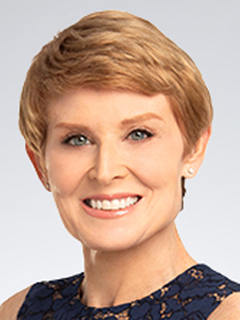Solid, not spectacular, February job gains
Multiple job holders are rising again as a share of workers.

February 27, 2025
Payroll employment is expected to show gains of 135,000 for February, close to the initial 143,000 we saw in the January employment report. Public sector payrolls are expected to have risen by 20,000 in February, which is significantly weaker than the 32,000 in January.
It is too soon for many of the layoffs among federal workers to show up in the monthly employment data; many of those layoffs are expected to show up in the March employment report. However, job offers were rescinded and hiring freezes were put in place during the first couple of weeks of the new administration. That alone could zero out the contribution of jobs from the federal workforce for February. Risk is to the downside on public sector hiring, which has been a major driver of employment gains since mid-2023.
Private sector payrolls are expected to rise by 115,000, which is close to the 111,000 we saw in January. Hiring in healthcare and social assistance is expected to remain a driver of overall gains. The leisure and hospitality sector is expected to rebound after losing ground following the fires in Los Angeles. The key issue will be who shows up for those jobs, which are disproportionately dependent upon immigrants. The administration has revoked the asylum status of nearly one million Venezuelan and Haitian refugees, which may keep them from showing up to work or filling vacancies that native-born workers tend to shun.
Manufacturing is expected to add about 5,000 workers in February, on the heels of somewhat stronger vehicle production. The vehicle sector is one of the few sectors where consumers have been buying ahead of proposed changes in tax laws and potential tariffs. Unusually harsh winter weather in January likely kept consumers out of dealer showrooms across much of the South and put a large dent in sales volume. The downside is that any front-running to tariff changes and tax credits for electric vehicles will pull from demand later in the year.
Average hourly earnings are expected to rise only 0.3% in February, after accelerating at a 0.5% pace in January. A loss in low-wage workers helped buoy hourly earnings in the wake of fires last month. That will push up the year-on-year pace to 4.2% from 4.1% in January. That will keep average hourly earnings close to the 4.1% pace of the fourth quarter. Average hours worked are expected to edge back up to 34.2 in February, after slipping to the lowest level since the onset of the pandemic in March 2020 for January.
Separately, the unemployment rate is expected to hold at 4% in February. We could see a slight tick down in participation in the labor force. Fear of deportations has shown up in anecdotal reports of some workers staying home. Foreign-born workers tend to participate in the labor market at a higher rate than native-born workers.
Multiple job holders are rising again as a share of workers. The educational attainment of multiple job holders has moved up significantly with time; much of the increase post-pandemic has been driven by those who already have one full-time job. Millennials dominate the category.
The ranks of those out sick and unable to work hit the highest levels since the pandemic in January and are expected to remain elevated in the data for February. We are seeing an increase in multiple illnesses from the flu to COVID cases. Some schools have had to shut down to contain outbreaks, including the measles.
Any front-running to tariff changes and tax credits for electric vehicles will pull from demand later in the year.

Diane Swonk
KPMG Chief Economist
Explore more

January employment solid
The number of multiple job holders increased to 8.8 million.

KPMG Economics
A source for unbiased economic intelligence to help improve strategic decision-making.

Breaking up is hard to do: Tariffs & trade wars
The outlook for economic growth is cooling.
Subscribe to insights from KPMG Economics
KPMG Economics distributes a wide selection of insight and analysis to help businesses make informed decisions.
Meet our team
